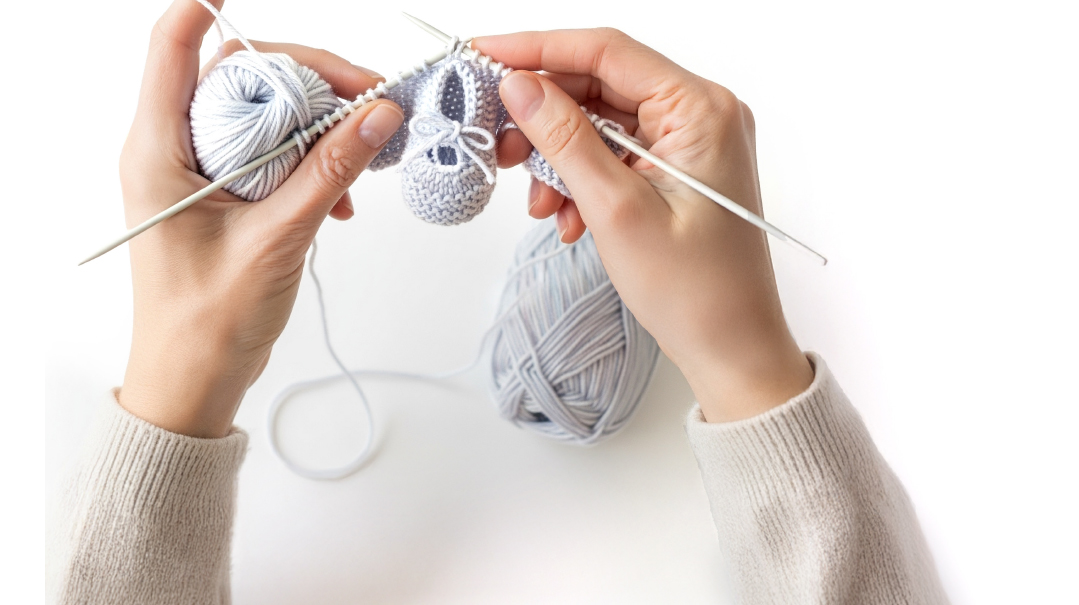Redefining Diabetes

It’s not a disease. It’s a medical condition — and one that’s relatively easy to live with. Kids and teens with type 1 diabetes take us into the world of blood testing, carb-counting, and emunah-building
“If you make a diabetes diagnosis a big secret, it’s going to take over your life. If you don’t make it a problem, it’s not a problem. You are controlling the diabetes; it’s not controlling you,” asserts Tzippy* an outspoken teenager who has lived with type 1 diabetes mellitus since age three.
Diabetes is something Tzippy has, not something she is. She doesn’t hide it, isn’t ashamed of it, and she’s eager to educate people about what causes the medical condition and how she manages it.
“Hashem has a plan for all of us. He created us with, if we utilize it the right way, a way to advance our soul. I really believe that diabetes is what my neshamah needed to prepare for the Next World,” says Tzippy.
The unusually mature teen firmly believes that, as a rav once told her, “You are not sick. As long as you control your blood sugar, you can be as healthy as any of us.”
Diagnosing “Type 1”
If you know a diabetic, you’ll hear the term “blood sugar” thrown around a lot. But what exactly does it mean?
When a normal, healthy person eats a meal, the food gets broken down and converted into glucose — otherwise known as blood sugar — which fuels the body like gasoline does a car. The pancreas is an essential part of the process because it pumps out precisely the right amount of insulin, a hormone, to help the glucose move from the blood into the cells.
Type 1 diabetes occurs when the pancreas doesn’t produce enough insulin. As a result, the glucose builds up in the blood and, instead of going into the cells, overflows into the urine and passes out of the body. With its blood sugar reserves depleted, the body then turns to its “plan B” energy source — fat. This explains why weight loss is a red-flag sign of diabetes.
Within five to ten years of onset, the pancreas of a diabetic typically goes from less-than-ideal function, to minimal function, to entirely nonfunctioning. Since the body can no longer produce insulin, diabetics often require insulin injections to ensure sufficient blood sugar.
“Diabetes is basically an autoimmune response that ultimately leads to destruction of the insulin-producing cells in your pancreas. This process could be going on for months or years without you even knowing it. Once your pancreas’s ability to produce insulin drops below a certain threshold, your blood sugar starts to rise. This is when the typical symptoms of diabetes present,” explains Dr. Ian Marshall, chief of the division of pediatric endocrinology at UMDNJ-Robert Wood Johnson Medical School in New Jersey, who has treated newborns to twenty-one-year-olds with diabetes.
Years ago, this medical condition was called juvenile or insulin-dependent diabetes, but these days, it’s usually just called “type 1 diabetes.” Type 2 diabetes is similar to type 1 but it develops in adults, later in life.
It usually shows up in childhood, adolescence, or early adulthood and affects around 1 in every 400 children and adolescents. The exact cause is unknown, but researchers believe there is a viral or environmental trigger that causes an immune reaction in genetically susceptible people.
In most cases, the telltale signs of diabetes can help doctors correctly diagnose a child. Aside from weight loss, there’s also polydipsia (drinking a lot), polyuria, (urinating a lot), and nocturia (waking up at night to use the bathroom). But an accurate diagnosis can take longer if the pediatrician first suspects a viral infection or some other malady.
“I see children who are diagnosed later than should be,” says Dr. Susan R. Brill, director of Adolescent Medicine at Children’s Hospital at Saint Peter’s University Hospital in New Jersey. “Usually, excess urine and excess thirst brings them in. We dip the urine and send them to the emergency room because a child with a lot of sugar in his or her urine is a child who needs immediate medical attention.”
Diabetes Gear
At one point in time, the main way that diabetics could control their blood sugar was through insulin shots. This treatment method, which requires a strict schedule, is still widely used. But with the advent of the insulin pump, individuals can now lead even more normal lives — eating when they’re hungry and managing blood sugar more easily.
According to Medtronics, an insulin pump is “a small device that delivers insulin continuously to the body. About the size of a compact cell phone, it is worn outside the body in a pocket, underneath clothing in a leg pouch, bra pouch, or on your belt like a phone or MP3 player. The insulin pump delivers insulin through a tiny, soft tube — thinner than a strand of spaghetti, eliminating the need for standard daily insulin injections.”
How it works: The user personally programs the pump to deliver the needed insulin to match the carbs consumed, one of many reasons why every diabetic can quote you the carb count on just about any food they’ve ever eaten (and if not, they know how to get it). To keep blood glucose levels in the right range between meals and overnight, the pump also allows for insulin to be delivered continually.
Since insulin pumps are the most accurate, precise, and flexible insulin delivery system currently available, they are rising in use and popularity. But not every child, teen, or adult with diabetes has switched to the pump, some preferring the daily shots instead. It’s a decision that patients make with their doctors.
Going Public
“When we have a siyum, classmates bring pickles, diet soda, and foods they know I will eat,” says Gitty*, an eleven-year-old with diabetes. “And they eat these foods, too, so I don’t feel like I’m being singled out.”
Like Gitty, many kids with diabetes have chosen to “come out” about their medical condition, whether because they must test their blood sugar and give shots at school, or as a result of their conspicuous insulin pump.
Yitz*, age seventeen, has been hanging out with the same pack of friends since pre 1A. He is comfortable around them, and his diabetes is something the whole group has gotten used to, to the point where it’s easy for them to even forget that he has it. Since they know him so well, though, they can sense when he needs more insulin, just from his comments, behavior, and demeanor:
“My friends know if my numbers are low. If I get irritable or act nutty, they will say, ‘Test yourself right now!” Yitz jokes. “I don’t treat my diabetes like a big deal, so my friends don’t either.”
Proactive parents of a diabetic kid usually meet with school staffers to make sure that their child is protected — physically and emotionally — during the school day. Often the kid will be allowed to stock a “low box” (a box with fruit leathers, juice boxes, and other items for quick sugar when needed) in the nurse’s office.
Sometimes this is a closely guarded secret, known only to the teacher, who learns to read a code from the child, like two fingers in the air, so that the child can slip out of the room with permission. Typically, though, the diabetes is a known condition to classmates who are not only aware of why the child/teen is leaving the room, but are entirely supportive.
Although some parents stay hush-hush about their child’s diabetes, many opt for a more open policy because of safety concerns. “My biggest fear was that my daughter could go to a friend whose mother doesn’t know about her diabetes, and if she wasn’t feeling well, and something happened there with her sugars, the mother would have no idea how to handle it,” shares one mother. “I make sure that wherever she is, the adult in charge knows about the diabetes and is aware of how to handle it if something should come up.
“I’ve heard of seminary girls rooming together, and one of those girls not disclosing that she has diabetes. I can’t imagine keeping such a secret. There’s no reason for it. This is what Hashem gave us, and we feel no shame.”
One of the downsides of publicizing your medical condition, say teens, is that people often offer unsolicited advice or comments. “The next time you see me enjoying a delicious sugary dessert, don’t come up to me and joke, ‘Are you sure you’re able to have that?’” vents Eliana*. “If I wasn’t able to manage it, I wouldn’t eat it. I think about everything that I put into my mouth. Can you say the same about you?”
For Yitz, the worst part is when people try to “lift” his spirits: “I can’t stand when people say, ‘Baruch Hashem you don’t have cancer.’ Then I just feel guilty when I’m bummed about having diabetes. I don’t wake up in the morning saying, ‘Yippee, I have diabetes and not cancer.’ What I’ve got, I’ve got. Okay, I’ll deal. But don’t tell me how lucky I am for it.”
A Big Responsibility
The technical part of managing blood sugar levels can be easier than the emotional part of diabetes, which requires fortitude, resilience, and acceptance. Kids—and especially teens—can grow frustrated that their life is, to an extent, centered on diet and diabetes. “If I want to eat something at a party, and I have to use my test kit and give myself insulin, I sometimes think, Uch, this is annoying,” says Shmuel*. “But I’ve made peace with the fact that some days I’m mad about my diabetes.”
It can also be aggravating for diabetics to be treated like someone with a disease, when careful management of insulin makes them feel healthy and normal.
Yet, at the end of the day, they do have a medical condition and if they don’t take it seriously enough — or try to deny its existence altogether — they’ll have to pay a heavy price.
Over the years, Dr. Brill has seen plenty of “compliance issues,” where kids or teens fail to keep a close eye on their blood sugar levels. “It can depend a lot on when the child is diagnosed,” she points out. “If it’s a young age, like five years old, they don’t remember when they didn’t have diabetes, which makes compliance easier. Still, the parents may infantilize their child, like giving a fourteen-year-old insulin shots when they can do it themselves, if they’ve had it for a long time. Or you might have a mother who always reminds her kid to check blood sugars, when that kid is old enough to be more independent.”
The immortality of youth also makes it hard for some teenagers to worry about the prevention of health issues that might not occur for thirty years. “A teenage boy is not thinking about retinopathy and potential blindness in his fifties,” explains Dr. Brill, “because like a typical teen, he doesn’t always realize the consequences of his actions.”
There’s also the curiosity factor — some teens feel the need to test what will happen if they stop taking their insulin. “They don’t understand how dangerous it is not to take the insulin, so they skip doses, sometimes sneaking, so their parents don’t realize they’re skipping. They don’t check their sugars; they stop calculating the carbs,” says Dr. Brill.
“But if a child with diabetes doesn’t take their required insulin for a couple of days to a week,” she continues, “it can send their body into diabetic ketoacidosis, a life-threatening condition. They could end up in intensive care, carefully monitored while given insulin until the acidosis is corrected.”
Once kids experience how sick they feel in this state, most never want to go there again, so it provides a natural incentive for staying on track in the future. “At the beginning, I counted everything I ate. But then I got used to it, so I got lazy. Then I got sick,” shares one honest teenager. “I woke up and accepted that I can’t ever be lazy with diabetes. This is my life.”
The Shidduch Parshah
For girls with diabetes, the question of childbearing becomes a hot topic when they start dating. Miri*, a mother of a daughter in the shidduch parshah who has type 1 diabetes, finds herself explaining the medical condition to anyone willing to learn and listen, reassuring them that her daughter’s blood sugar is well controlled, and that her daughter is actually healthier than a lot of young women because she takes such good care of herself.
Most women with diabetes are capable of getting pregnant and carrying a child, and gynecologists are trained in managing any particular risks that might arise. Many seek out gynecologists who specialize in managing diabetes through pregnancy.
Yocheved*, age twenty-one, was worried that her diabetes would make shidduchim challenging. But it wasn’t long before she found her bashert, a young man who knew about the condition and wasn’t bothered by it. Yocheved became pregnant in the first year of their marriage, and brought their healthy baby girl into the world a few months ago. “My doctor actually told me that I was a very boring patient,” says Yocheved, who was cared for in a high-risk ob/gyn practice. “Being pregnant, I needed more insulin than usual, so I just stayed off as many carbs as possible, and kept the insulin coming, and I kept testing. I had a normal labor and delivery.”
Promising Advances
According to Dr. Marshall, we’re at the forefront of making real progress in the treatment and prevention of type 1 diabetes. For patients whose pancreas is not functioning well, the focus of the latest research is on finding methods that preserve what is left in the pancreas, instead of going to zero function and becoming insulin-dependent.
Other studies are looking at how antibodies in the blood might predict if someone is at high risk for diabetes, as well as interventions that could prevent onset. Pancreas, islet cell, and stem cell transplants are additional options that will likely become more common in the future.
As both types of diabetes have become more prevalent in the secular and Jewish world, there is much reason for concern, but also, for optimism. The staggering number of individuals who have this condition — 25.8 million in the US alone, with an estimated 7 million more undiagnosed — has resulted in millions of dollars being allocated towards improving diagnosis, treatment, and prevention.
In the meantime, individuals with diabetes are making the best of a less-than-ideal situation. “I’d give up having diabetes in a millisecond if I could. But I can’t, so I’m not going to dwell on it and be a negative person,” says Shmuel.
“Once, when I was hospitalized, people visited to cheer me up,” he adds, “but instead, I would cheer them up. I’ve always maintained a positive attitude about diabetes. Hashem gave this to me, and He’s with me the whole time.”
THE SUGAR MYTH
Many people mistakenly believe that anyone with diabetes has to avoid sweets entirely, eat only sugarless products made with artificial sweetener, and stick to a strict diet of healthy fruit and veggies only. A piece of chocolate cake? Never!
In truth, individuals with diabetes can — and do — eat sugar and carbs. It’s just that they have to be careful about exactly how much they’re eating at any given moment, and throughout the day. That way, they can give themselves the right amount of insulin (through shots or a pump), at the right time, in proportion to the sugar they are eating. Diabetics also test their blood sugar throughout the day in order to keep it well controlled.
To stay healthy, diabetics must become experts in food calculating. Even teenagers like Tzippy can tell you exactly how many carbohydrates are in every kind of food — not just prepackaged food where the carbs are listed on the nutrition label, but also, a 1/2 cup of white potato (14 grams), or the zucchini in Friday night’s chicken soup (6.6 grams for a cup). Lifelong diabetics can even figure out the carb count of homemade foods like potato kugel and matzoh balls.
*Names have been changed
(Originally featured in Family First, Issue 251)
Oops! We could not locate your form.






